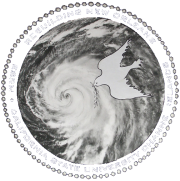Farmers Market
We visited the local farmer market in an effort to see how the weather and culture affected the local produce. The farmer’s market was smaller and had seasonal vegetables.

One woman talked about the late season freeze. She had lost a lot of her produce in the freeze but the leafy greens and spicy peppers made it through.

The people we bought our shellfish from were having a bad season for shrimp and crab. There is currently a ban on catching female blue crabs. The female crabs have rounder stomachs and carry the eggs under her shell. This ban was made in an effort to allow the crab populations to rebound.

One man I talked to grew his plants in a hydroponic system. Hydroponic systems involve growing food in tanks of water opposed to growing them in the dirt outside. During the winter he heated the house where he was growing the food. This allows him to have a wider variety of vegetables year round and not worry about the freezes. The downfall is the high energy intake.
There were also people selling honey, soap, popsicles, and other goods.

 Today we took our first look at the location we will be conducting restoration surveys throughout the rest of the trip. Matt and I were able to get in a quick flight with the remaining light we had left and checked out the vast forest from an aerial perspective. In addition to our field work on the ground, we will also be working on creating aerial maps of some of the locations in hopes of increasing the efficiency of our observation surveys. I am looking forward to benefitting this bottomland hardwood forest any way I can.
Today we took our first look at the location we will be conducting restoration surveys throughout the rest of the trip. Matt and I were able to get in a quick flight with the remaining light we had left and checked out the vast forest from an aerial perspective. In addition to our field work on the ground, we will also be working on creating aerial maps of some of the locations in hopes of increasing the efficiency of our observation surveys. I am looking forward to benefitting this bottomland hardwood forest any way I can.






 Our brachetto appetizer (pre-broiling) made with only local ingredients purchased this morning at the farmers market. Should be delicious.
Our brachetto appetizer (pre-broiling) made with only local ingredients purchased this morning at the farmers market. Should be delicious.


 “We wander through old streets, and pause before the age stricken houses; and, strange to say, the magic past lights them up.”
“We wander through old streets, and pause before the age stricken houses; and, strange to say, the magic past lights them up.”







